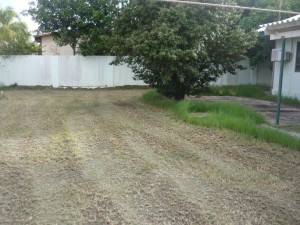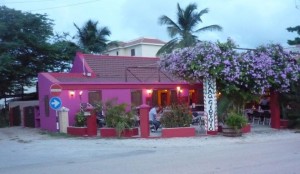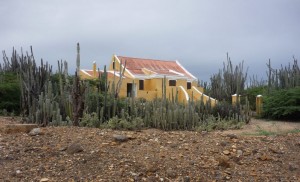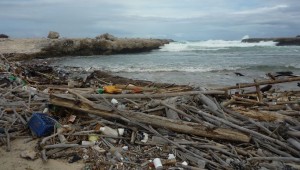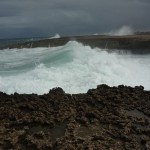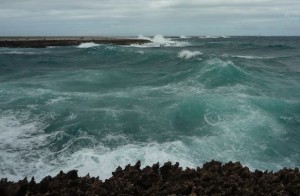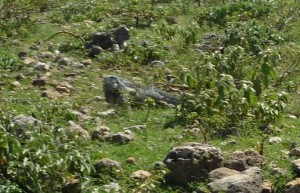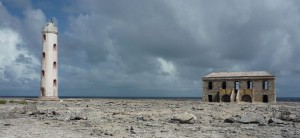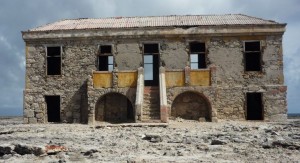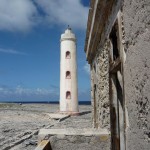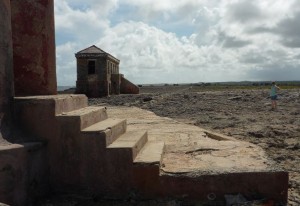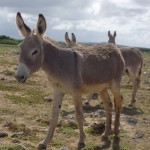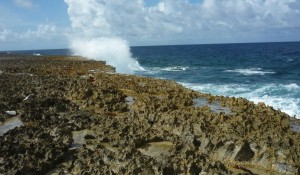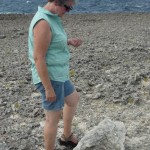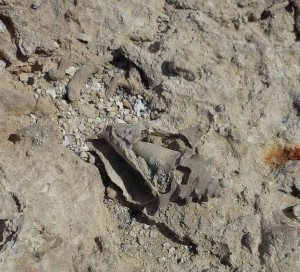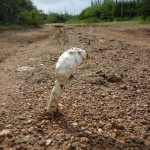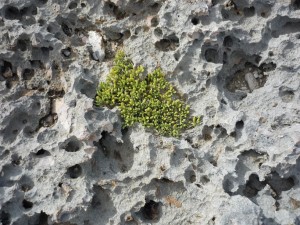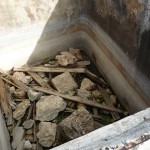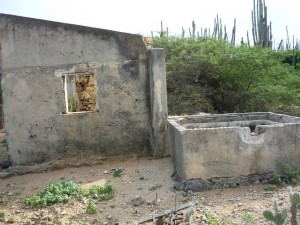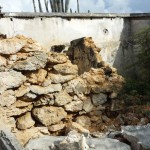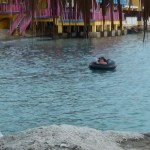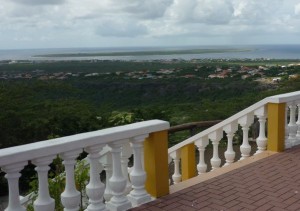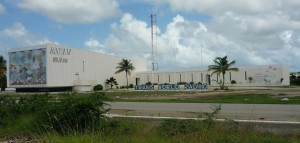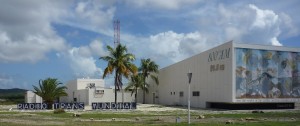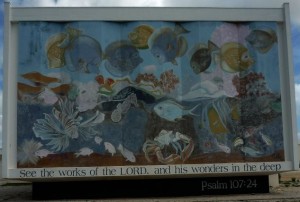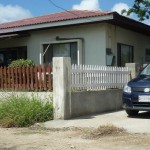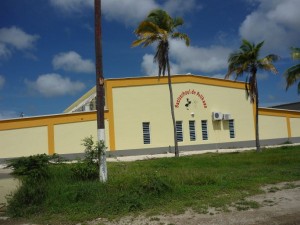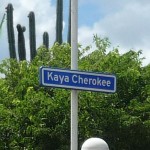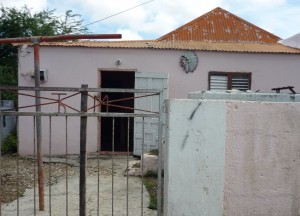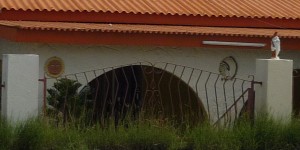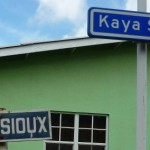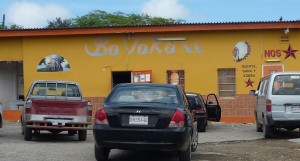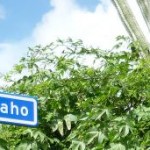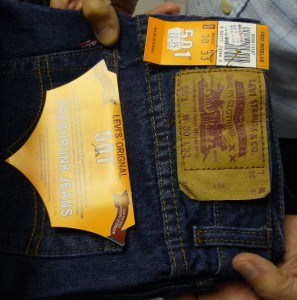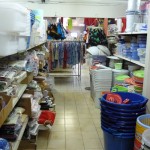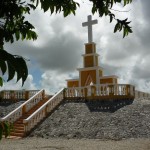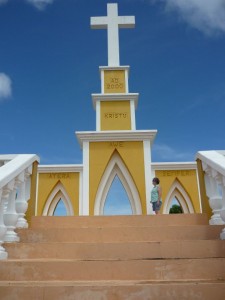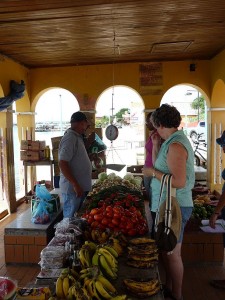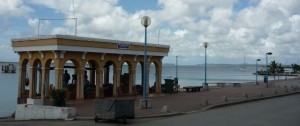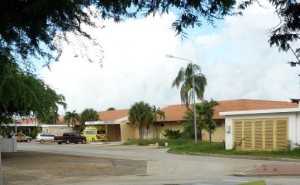As expected this morning, there were no cutbacks overnight. We do not expect any more while using Amplitude Modulation Companding (AMC), unless a lizard or other creature ‘bridges’ an arc gap.
After devotions this morning, my first project was to investigate why the studio’s on-air monitor for 800kHz sounded so distorted. Our receiver at home sounded OK. My investigation, using headphones, found that the unbalanced RCA plug output of the on-air receiver sounded fine, but the balanced ‘line output’ for the monitor amplifier sounded bad. I pulled the receiver out of the rack and took it to the engineering lab only to find it would not receive any stations. I concluded that the lab must be shielded, so moved the receiver to an office. There it received the signal on 800kHz plus several Venezuelan stations. Opening the receiver revealed that a small circuit board had been built up and added to provide the balanced line output. Of course there was no schematic of this, so I thought about tracing one out. Before doing so, I decided to poke around a bit, with no success, until I touched the tiny on-board potentiometer for controlling the line output level. The distortion cleared up, so I ‘turned’ it back-and-forth a few times to clean up the dirt or corrosion, put everything back together and the problem was solved.
I then wrote up the procedures that we used yesterday to set the AM transmitter up for AMC operation, focusing on the steps that are not included in the manual. This is to be added to the manual, so it can be set up next time without having to contact the manufacturer.
After a lunch of toasted cheese sandwich, cauliflower and baked french fries with the ever present glasses of iced tea, I spent the afternoon at the transmitter site.
The next project, in order of priority, is to finish installation of, and activate, a new security system. There is an older system in service, but this new one will provide expanded protection and has greater capability of informing authorities of any problem. It has a computer for the ‘brains’ of the system and ‘tons’ of options. It has been partially installed, so I have to determine what has already been done and what still has to be done. There was even a question whether the control keypad near the door was even functional. It has a display on it, but it appeared to be totally ‘dead’.
After reading through about 100 pages of various manuals for the base unit, keypad, sensors, and optional accessories, I was finally able to figure out how to bring the display to ‘life’. Now it was possible to enter the security code and determine how various options had been programmed. At one point I was entering numbers to looks at some of these options, when all of a sudden the system was ‘armed’. The display read, “SYSTEM ARMED, you have (x) seconds to exit”. This was a shock to me, as I did NOT know how to ‘disarm’ the system yet! Shortly, it started beeping more loudly and a ‘siren’ outside sounded. Fortunately, I knew where the siren was connected and quickly disconnected it. I also removed the power and battery backup.
Before reconnecting it, I decided it might be good to learn how to ‘disarm’ it! After sorting through several more pages of instructions, I learned how and I powered it up (except for the outside siren!). It came back on, saying it was ‘busy’ (apparently ‘booting up’ its computer) then switching directly to being ‘armed’. It took a few times running to power the system down, before getting the security code and disarm keys entered in the right sequence and at the right time, so the alarm would not trigger. It would have been quite a sight if someone had seen me running madly back and forth!
I now feel comfortable ‘arming’ and ‘disarming’ the system. Also have some idea of which sensors are working, or not. Hopefully it will be possible to begin getting everything working next week.
It was approaching 5:30pm, the time the AM transmitter signs on, so I decided to wait for it to come on before leaving for home. It came on for a fraction of a second, dropped off, then came right back on at normal power, but with the backup exciter. I decided to switch back to the primary exciter. This required switching from ‘remote’ to ‘local’ control, then making the exciter switch. I then had to switch back to ‘remote’ control. Immediately up switching to ‘remote’, the transmitter came down and switched to the backup exciter again. I tried it again and the same thing happened, except this time I noted the transmitter was in ‘standard’ modulation mode when in ‘local’ control and switched to AMC when switched to ‘remote’. Joe was in town and made the switch from the secondary to primary exciters remotely and everything worked OK because the transmitter stayed in AMC with no switch to ‘standard’ modulation. It looks like the macros for starting the transmitter will all need to be changed for smoother transitions while using AMC.
I got home tonight to find cars parked everywhere along the road and in the space between the curb and our fence. Fortunately, the ‘no parking’ sign on our gate worked and there was just enough opening to park the car in our carport. I checked out the beach and verified, as we had suspected, that swimming there tonight was out of the question.
For supper tonight we had leftovers from last night — still yummy! Instead of papaya for desert, we had a treat — a little ice cream and chocolate.
 Today has been an interesting day. At 8:00 this morning, I was startled by voices outside the door. It was some workers coming to put in a new fence and they needed to plug in their extension cord. I opened up the laundry room so they could
Today has been an interesting day. At 8:00 this morning, I was startled by voices outside the door. It was some workers coming to put in a new fence and they needed to plug in their extension cord. I opened up the laundry room so they could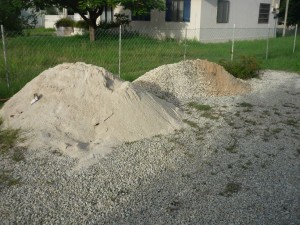 plug in at that outlet. Their next step was to begin grinding off the gate and the top of the concrete posts. Soon a dump truck of sand arrived and was dumped in the driveway and then a load of stone. In the meantime, the TWR workers arrived with a
plug in at that outlet. Their next step was to begin grinding off the gate and the top of the concrete posts. Soon a dump truck of sand arrived and was dumped in the driveway and then a load of stone. In the meantime, the TWR workers arrived with a 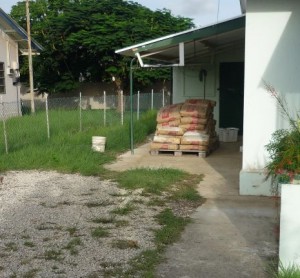 pallet of bags of cement. They told me that the sand and gravel was supposed to have been unloaded next door where no one was staying, but since the sand and gravel was in our driveway, the bags of cement would be unloaded in our carport. They have been busy grinding
pallet of bags of cement. They told me that the sand and gravel was supposed to have been unloaded next door where no one was staying, but since the sand and gravel was in our driveway, the bags of cement would be unloaded in our carport. They have been busy grinding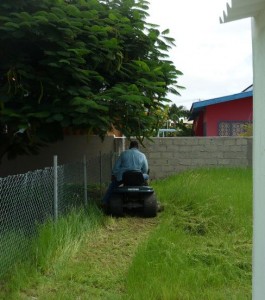 down the concrete posts for the new fence and raising a bit of dust.
down the concrete posts for the new fence and raising a bit of dust.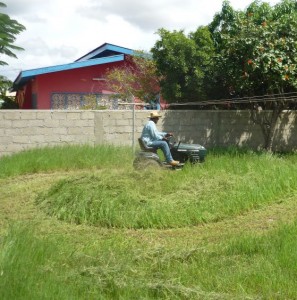
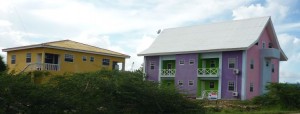 the ocean around 6:00.
the ocean around 6:00.

